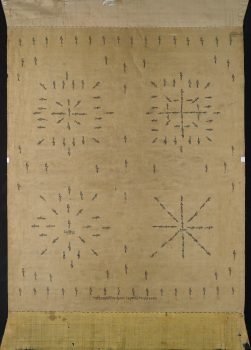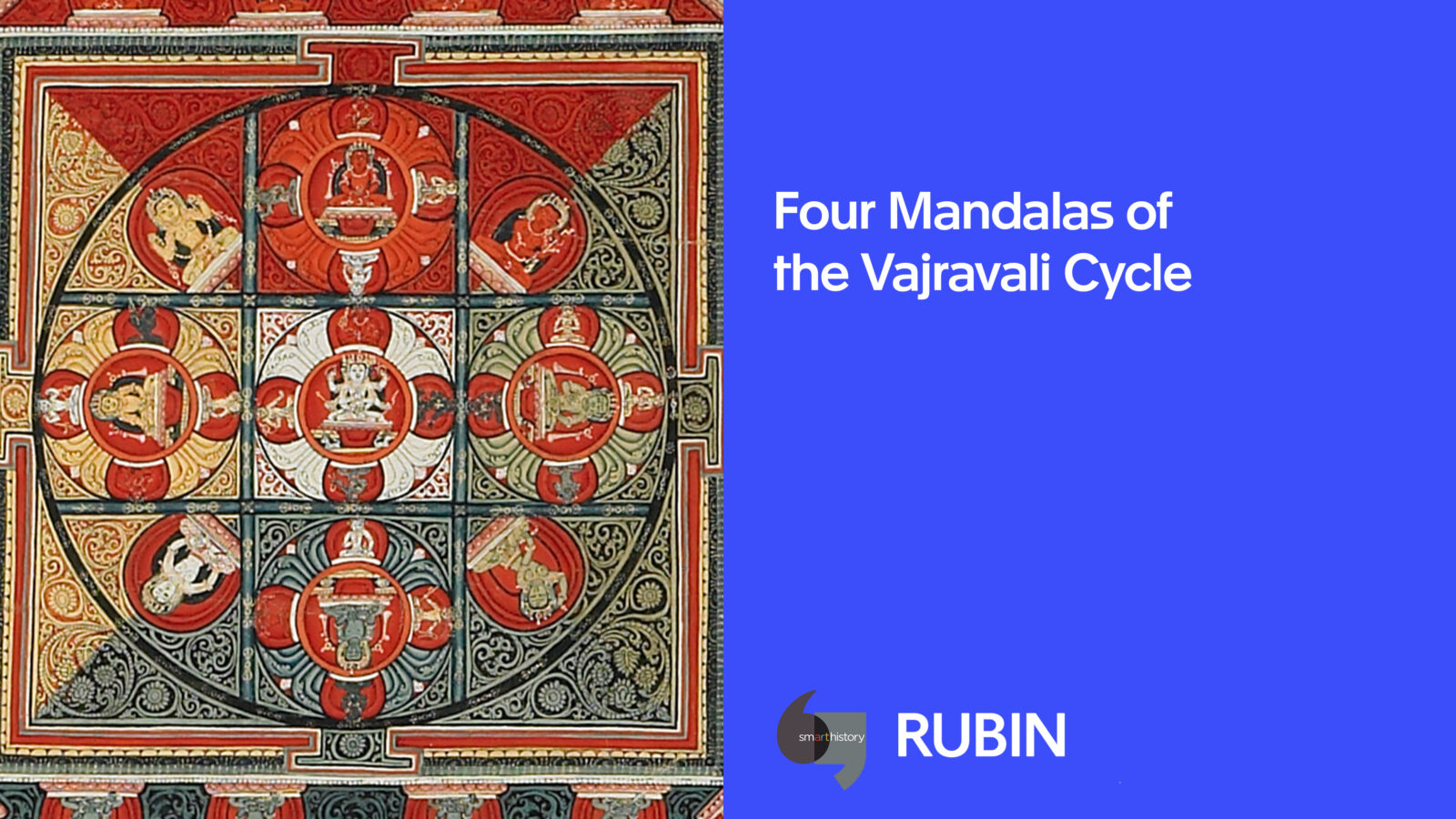Ewam Choden Monastery, Tsang Province, Central Tibet
1429-1456


Ewam Choden Monastery, Tsang Province, Central Tibet
1429-1456


This exquisite thangka is the thirteenth painting in a set depicting the mandalas of the Vajravali cycle, a compendium of Esoteric teachings compiled by the eleventh-century Indian master Abhayakaragupta and widely transmitted in Tibet.This painting is from the set commissioned by the founder of Ngor Ewam Monastery (1429), Ngorchen Kunga Zangpo (1382–1456), in memory of his deceased teacher Sazang Phakpa Shonnu Lodro (1358–1424?). Details of this set’s creation were recorded in Ngor monastic histories, which recount that it was made at Ngor Monastery by six itinerant Newar artists who came from the Kathmandu Valley, in Nepal, to paint them, including the famous artist Wangguli. Ngor Monastery became particularly famous for such meticulous, intricately painted mandalas—recognizable by a rich red and blue palette highlighted in yellow—that closely followed Newar aesthetics inherited from such itinerant Nepalese master painters.Remarkable for its near pristine condition, this painting represents the culmination of Newar artisanship in southern-central Tibet, its refinement indicated by the size and precision of the figures, the variation in the delicate vegetal scrolls filling the background, and many of the minor motifs. Although the painting was made by Newari artists, the composition strictly follows Tibetan conventions of imagery and iconography.

A contemplative practice in which a person uses concentration and visualization to achieve aims such as transforming the mind and generating feelings of compassion. Techniques include focusing on breathing or visualizing oneself as a deity.
A meditation technique primarily used in tantric practice that involves imagining a deity in one’s mind or imagining oneself becoming a deity and carrying out various activities. Such techniques are intended to help a practitioner transform ordinary perception and achieve enlightened qualities.
Prescribed practices that carry symbolic meaning and value within a specific tradition and are intended to attain a desired outcome. Rituals are usually done as part of a ceremony or regular routine.
A geometrically shaped tool used for meditation and visualization in Buddhist practice. It is a representation of the palace of a deity and the Buddhist conception of the cosmos.
Today, Tibetans primarily inhabit the Tibetan Plateau, situated between the Himalayan mountain range and the Indian subcontinent to the west, Chinese cultural regions to the east, and Mongolian cultural regions to the northeast. During the 7th to 9th century, Tibetan rulers expanded their empire across Central Asia, and established Buddhism as the state religion.
Get the latest news and stories from the Rubin, plus occasional information on how to support our work.